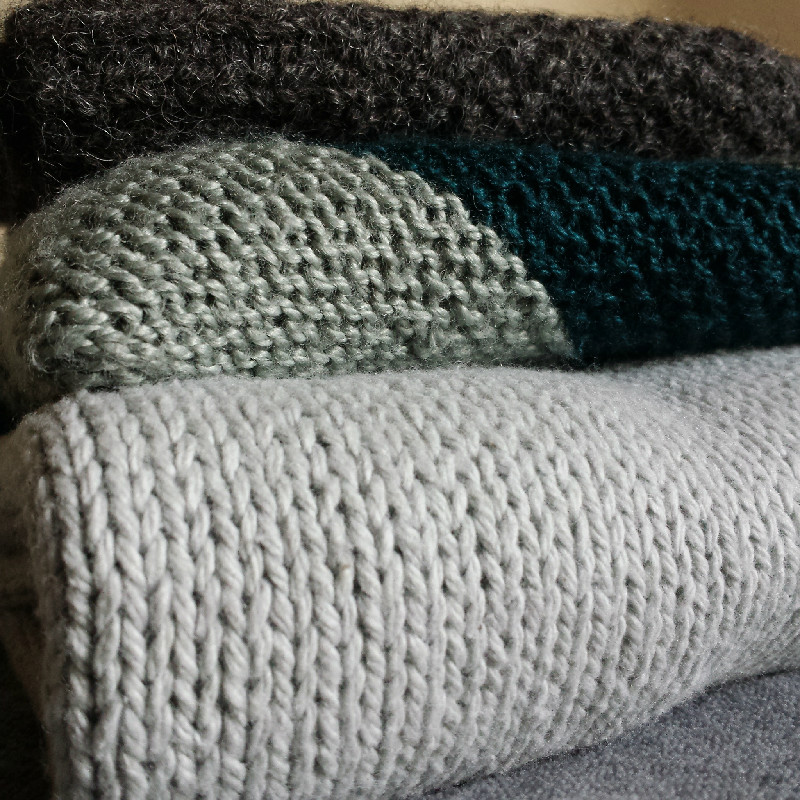Blocking
Blocking generally refers to manipulating a knit object into specific dimensions while it is wet. After you get most of the water out, you lay it flat on an absorbent surface and gently pull it into the desired shape. You may need to use pins to hold it there until it is dry. There are some objects that don’t benefit from being blocked flat, like hats, but most the time this method works ok.
Blocking helps the stitches in the knitting even themselves out, and many yarns will behave
differently once they have been wet. This process tends to make the knit look more even.
You shouldn’t have to wash your knits all that much unless they get messy. You should give everything a bath
at the end of the season before it gets put away; it really helps keep them in tip-top shape and keeps things like moths away.
Handwashing your knits is easy, but there are a few ground rules to keep in mind:
-Never twist or wring the knit to get water out.
-Do not run water on the knit itself, put all the water in the basin first. If you need to add more water, move the knit out of the way.
-Do not use hot water. Lukewarm is ok, but hot water can make the yarn shrink or felt.
-Be gentle, the knit is at its weakest when its full of water.
All you need is
1) Some wool soap or a very mild detergent.
2) A basin big enough to submerge the item in comfortably (like a clean sink or a bowl/tub).
3) A few towels.
Method:
Step 1: Fill the receptacle with water, enough to cover the item.
Step 2: Add soap, swish it around. The water should be kind of murky if you are using soap with lanolin.
Step 3: Plunk the knit in there. Give it a gentle swish or two, as well as a few squishes to get some of the air out.
.jpg) Step 4: Leave it alone for 15-20 minutes. I am very guilty of forgetting about things and leaving them for far longer, it doesn’t hurt anything.
Step 4: Leave it alone for 15-20 minutes. I am very guilty of forgetting about things and leaving them for far longer, it doesn’t hurt anything.
Step 5a: If you are using a rinse free soap and the knit isn’t messy, just squeeze the water out gently.
Step 5b: If you need to rinse the item dump the water out and fill the basin again. Repeat step 3 and then squeeze the water out gently.
Step 6: While supporting the whole piece* transfer it to a towel and lay it out. Roll the towel up and try and squeeze as much water out as possible. I usually stand/jump on it.
Step 7: Get a new towel (or a blocking board) and lay out the item* to the desired dimensions. Pin if needed.
.jpg)
.jpg)
.jpg)
*Knitting/wool can very easily stretch when it is wet, so you need to be careful to support the entire item if possible.
This can be used to your advantage to block things to a specific dimension.
*Laying them under or near a fan speeds up the drying process.
Back to the top

